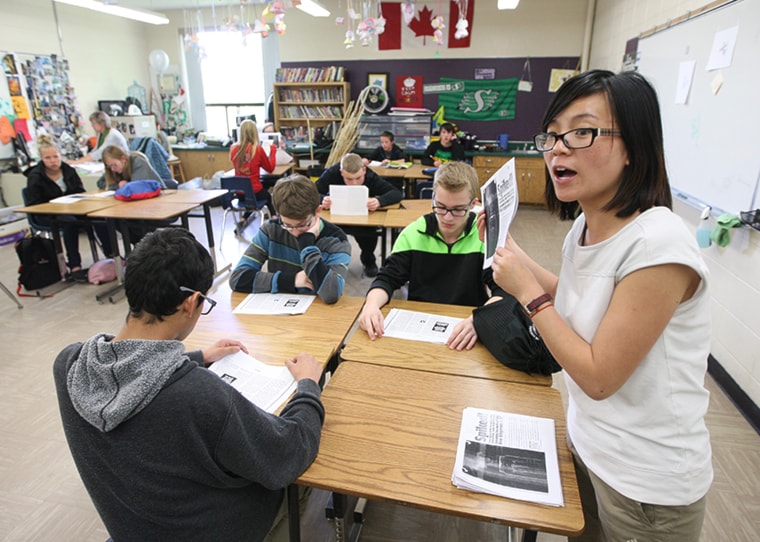With half of the global population and an ever-increasing share of its economic clout, Canadian political and business leaders want to get closer to Asia.
But, as a 2013 report by the Asia Pacific Foundation of Canada found, a majority of those with commercial or cultural ties to Asian nations reported that it is difficult to find Canadians with an appropriate level of knowledge and awareness of Asia.
Through education, the Alberta government wants to change that.
In the last 10 years, the number of partnerships between Alberta and Chinese educational institutions has grown exponentially.
There are ever more post-secondary scholarships available both ways, schools have twinning relationships, and language programs have sprung up.
As Teresa Woo-Paw, associate minister of international and intergovernmental relations, told an education symposium in Red Deer last week, the province wants to improve “Asia literacy” among Albertans.
The best way to get that awareness is to study or work in Asia, but while great numbers of Asian students come to study in Alberta every year, there is not much reciprocation.
“We struggle when we sign international agreements with other post-secondary institutions because we struggle to fill the quota in the agreements because most of our young people, when they think international, they think U.S., Mexico and perhaps Europe. So I think the idea of going farther is something we need to work on,” said Woo-Paw.
Getting more students to take up post-secondary opportunities in a place like China means getting them some language skills and cultural awareness in grade school. Doing that has been Monica Zhang’s task over the last two years while on exchange at Westpark and Eastview Middle Schools.
Zhang came to Red Deer from the megatropolis Chongqing in central China in 2012 to teach the newly-established Chinese Language and Culture course.
The 25-year-old has taught students beginner Mandarin, painting and calligraphy and has had them experience Chinese festivals.
She said Canadian students are very welcome in China, but it may be difficult for them to adapt to the far-stricter system.
“The education in Alberta is one of the best all around the world, so I don’t know if it’s necessary for them to go out or not. For the culture part, yes, but for the academic part I’m not sure because we have different ways to learn.
“Here you give kids more chances to do some stuff and you teach them to question things,” said Zhang.
Zhang’s two-year term ends in two weeks, and next year the course she teaches will not be run.
Red Deer Public Schools’ director of international education Rob Porkka said the division wants to resuscitate it in the future, but was not able to secure a new teacher for September.
The division runs a Mandarin as a Second Language program at Hunting Hills High School, after which students can transition into university studies in Beijing.
But while 16 Chinese students are studying in Red Deer Public schools as international students this year, Porkka too sees a challenge in reciprocating.
“Regardless of the country of destination, one of our big challenges is to get Canadian kids and high school students thinking about doing an overseas placement,” he said.
Porkka said some people ask him why the division does not offer Chinese immersion in this day and age rather than French immersion.
It may happen some day, he said, but the teaching resources and material need to be in place first.
The Red Deer Catholic Regional School Division offered a Mandarin high school language course up until this school year and has plans to reinstate it.
Associate superintendent, personnel Paul Stewart said the division has had students from Hong Kong and is increasing contact with Vietnam, but does not get students from mainland China, where religion is less prominent.
Fifteen schools in Alberta offer Mandarin bilingual programs, according to Alberta Education.
Edmonton is regarded as the Canadian leader in Asian education, with a Chinese bilingual program that started in 1982.
mfish@www.reddeeradvocate.com
